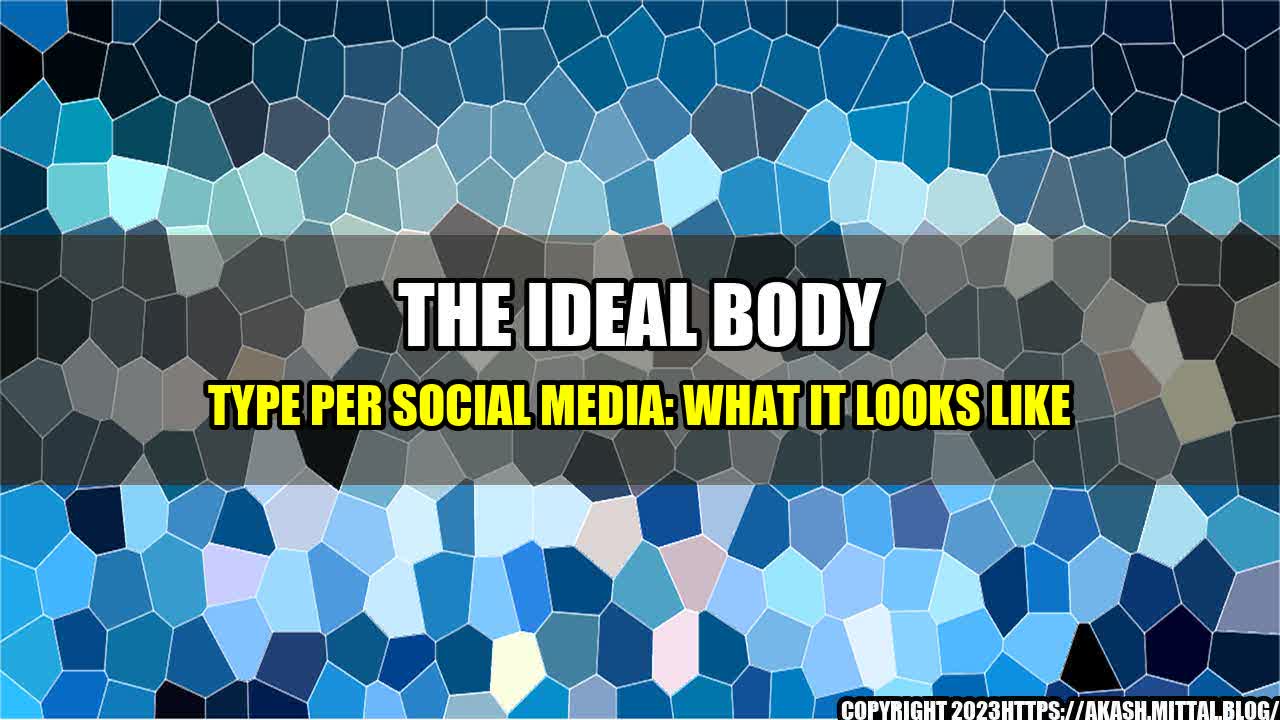With social media platforms dominating our daily lives, it's hard to ignore the beauty standards they promote. From Instagram to TikTok, we are bombarded with images of perfect bodies that seem impossible to achieve. But what is the ideal body type per social media, and is it healthy?
Let me tell you a story. One of my friends, let's call her Sarah, is a fitness enthusiast who spends most of her time at the gym. She recently decided to create a fitness Instagram account to share her passion and inspire others. However, after scrolling through countless fitness influencers' profiles, she realized that her body, already fit and toned, didn't fit the beauty standards promoted on the platform.
She felt discouraged and started comparing herself to others, which led her to adopt unhealthy habits. She started restricting her food intake, exercising excessively, and overall, pushing herself to the limit, all in the pursuit of the perfect social media body.
Unfortunately, Sarah's story is not unique. Many people, especially young adults and teenagers, are susceptible to the pressures of social media and its unrealistic beauty standards. Let's take a closer look at what the ideal body type per social media looks like and how it affects our well-being.
The Ideal Body Type Per Social Media Explained
The ideal body type per social media varies from platform to platform. Let's break it down.
Instagram is the birthplace of the thighbrow, the thigh gap, and the hourglass figure. It's all about curves, toned muscles, and flawless skin, with a touch of sex appeal. Think Kim Kardashian, Kylie Jenner, and Sommer Ray.
TikTok
TikTok is all about the 15-seconds of fame, and that also applies to body types. The ideal TikTok body is petite, youthful, and adorable, with a hint of quirkiness. Think Charli D'Amelio, Addison Rae, and Avani Gregg.
YouTube
YouTube is all about fitting into a specific category, whether it's fitness, beauty, or lifestyle. The ideal YouTube body is toned, muscular, and healthy-looking. Think Whitney Simmons, Nikki Blackketter, and Jeff Nippard.
Of course, these are generalizations, and there are exceptions. However, they represent the beauty standards that dominate these platforms and influence our perception of the ideal body type.
The Effects of the Ideal Body Type Per Social Media
The ideal body type per social media has a profound impact on our mental and physical health.
Mental Health
Social media can trigger body dissatisfaction, low self-esteem, depression, and anxiety, especially among young adults and teenagers. According to a survey conducted by the National Eating Disorders Association, 64% of individuals with eating disorders reported that Instagram negatively affected their body image.
Physical Health
The pursuit of the perfect social media body can lead to unhealthy behaviors, such as restrictive diets, excessive exercise, and even the use of steroids and illegal drugs. These behaviors can cause eating disorders, muscle injuries, and long-term health problems.
How to Achieve Your Ideal Body Type Without Sacrificing Your Health
Now that we understand the effects of the ideal body type per social media, it's time to discuss how to achieve your ideal body type without sacrificing your health.
Set Realistic Goals
Don't compare yourself to others on social media. Instead, set realistic goals based on your body type, fitness level, and overall health. Consult with a certified personal trainer or a registered dietitian to create a personalized fitness and nutrition plan that works for you.
Focus on Health, Not Looks
Shift your focus from looks to health. Exercise and eat nutritious foods to improve your overall well-being, not to fit into a specific beauty standard. Remember that health is not a one-size-fits-all concept.
Acknowledge Your Progress
Celebrate your progress and achievements, no matter how small they are. Avoid comparing yourself to others and acknowledge that everyone has a unique journey.
Conclusion
The ideal body type per social media can be harmful to our mental and physical health. Instead of striving for an unrealistic beauty standard, we should focus on our overall well-being and set realistic goals based on our body type and fitness level. By acknowledging our progress and achievements, we can improve our self-esteem and avoid the negative effects of social media.

Curated by Team Akash.Mittal.Blog
Share on Twitter Share on LinkedIn